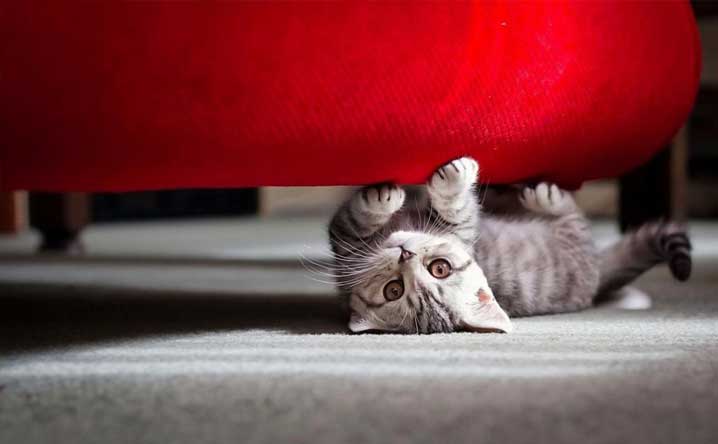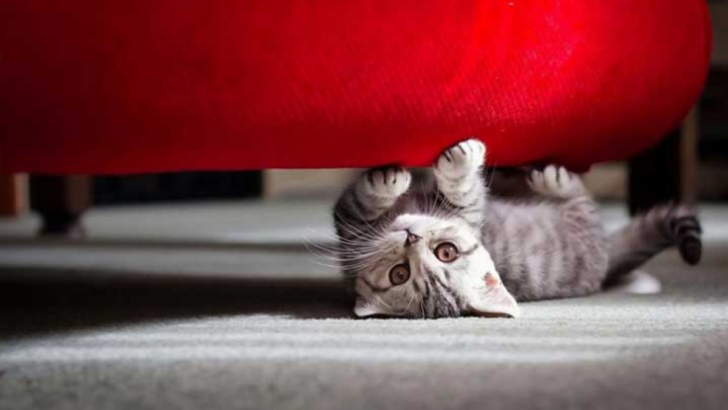Cats are natural scratchers—it’s part of their instincts. Scratching serves multiple purposes for cats: it helps them mark their territory, stretch their muscles, and keep their claws in tip-top shape. However, this natural behavior often leaves owners frustrated when their beloved furniture takes the brunt of their feline’s urge to scratch. But there’s no need to panic—there are a variety of ways to manage this behavior and maintain a peaceful, claw-free home. Understanding the underlying reasons for your cat’s scratching is the first step toward resolving the issue without sacrificing their needs.
Understanding the Root Cause of Scratching
To manage your cat’s scratching habits effectively, it’s crucial to understand why they scratch in the first place. Scratching is an instinctual behavior, part of their evolutionary blueprint. While some people might view it as a destructive act, for your cat, it’s a form of communication and a way to relieve stress. In the wild, scratching serves multiple functions: it marks their territory, leaving both a physical and scent-based mark that tells other animals this space is claimed. Additionally, it helps them stretch and exercise, which is vital for their physical health. So, when your cat starts to claw at the couch, it’s doing so for far more reasons than simply being naughty. Understanding this can help you approach the issue with patience and creativity rather than frustration.
The Subtle Art of Redirecting Their Energy
Redirecting your cat’s energy away from your furniture doesn’t require punishment or harsh measures. Cats are intelligent creatures and can be taught to associate certain behaviors with specific actions. The goal here is to provide an alternative that satisfies their scratching instinct without compromising your living room aesthetic. Scratching isn’t just about clawing—it’s also a means for your cat to stretch its body and release pent-up energy. If you can give them a similar outlet that mimics the stretching and marking process, they’ll be far less likely to use your favorite armchair as their scratching post.
The Role of Claw Maintenance in Their Behavior

Your cat’s claws are essential tools, not only for scratching but for climbing, hunting, and self-defense. However, the upkeep of their claws can often become a point of tension between owners and their pets. Cats naturally shed the outer sheath of their claws, but regular claw maintenance can help reduce the destructive impact they have on your furniture. Keeping your cat’s claws trimmed can minimize damage while still allowing them to engage in their natural behaviors. It’s a subtle yet effective way to limit the effects of scratching while respecting their instincts. Many owners find that incorporating this into their routine can prevent more severe scratching issues down the line.
When Scratching Becomes a Sign of Stress
Like humans, cats can become stressed or anxious, and scratching can sometimes serve as a coping mechanism. If your cat starts scratching more frequently or in new areas, it could be a sign that something is amiss in their environment. Cats thrive on routine and may scratch out of frustration or anxiety when faced with changes. It could be something as minor as a change in their feeding schedule, or perhaps a new piece of furniture has disrupted their territory. Understanding how stress impacts your cat’s behavior is vital to solving scratching issues. By observing patterns and noting any potential stressors, you’ll be able to address the root cause and adjust the environment to be more conducive to your cat’s well-being.
The Importance of Providing Stimulation and Engagement
Boredom can be one of the most common causes of excessive scratching. When a cat doesn’t have enough mental or physical stimulation, they’ll often seek out alternative ways to entertain themselves. Scratching can be a way to pass the time, especially if your cat is left alone for long periods. Engaging your cat in regular play and providing interactive toys can help prevent destructive scratching. The more mentally and physically active your cat is, the less likely they are to engage in unnecessary scratching. Additionally, playtime strengthens the bond between you and your feline friend, turning what might be an annoying behavior into an opportunity for connection.
Avoiding Conflict with Their Instincts
It’s easy to view scratching as a bad habit or even a defiance of your furniture’s pristine condition, but it’s important to remember that this behavior is deeply ingrained in your cat’s nature. Rather than attempting to suppress it entirely, it’s more effective to channel it in a way that benefits both you and your cat. Finding a balance between respecting your cat’s natural instincts and protecting your belongings requires patience and creativity. In many cases, the solution doesn’t involve stopping your cat from scratching altogether; it’s about managing where and how it happens. With the right mindset, you can create an environment where your cat can scratch to their heart’s content—without destroying your furniture.
Patience Pays Off in the Long Run

As with any behavior modification, patience is key. Cats are creatures of habit, and changing their scratching habits won’t happen overnight. It’s essential to stay consistent with whatever method you choose and give your cat time to adjust. In some cases, it may take weeks or even months for a cat to fully adjust to new scratching outlets. However, with persistence, your cat will begin to associate the scratching post with the act of scratching rather than your couch. By understanding their needs, providing alternatives, and reinforcing positive behaviors, you can keep your furniture in one piece while still respecting your cat’s natural instincts.
Embracing Their Nature in a Furniture-Friendly Way
Ultimately, preventing your cat from clawing your furniture doesn’t mean stifling their instincts or creating a tense atmosphere. By offering healthy alternatives and remaining patient, you can protect your home while maintaining your cat’s happiness. Scratching is a fundamental part of who they are, and managing it with the right tools and techniques ensures that both your cat and your furniture can coexist peacefully. Whether it’s through providing a better scratching post, trimming their claws, or simply understanding their emotional needs, you’ll find that keeping your furniture intact doesn’t have to come at the expense of your cat’s well-being. The key is finding the right balance between respecting their instincts and maintaining your living space.
